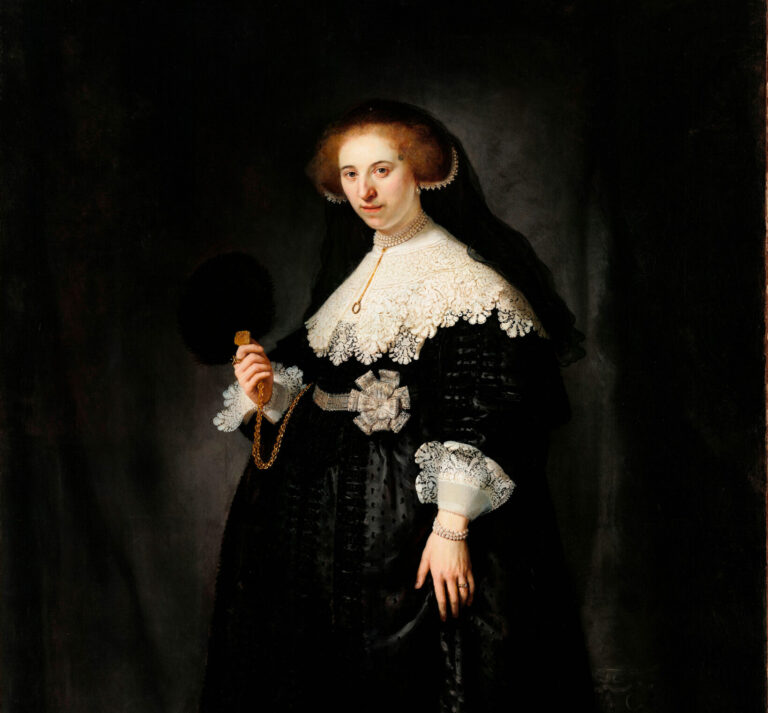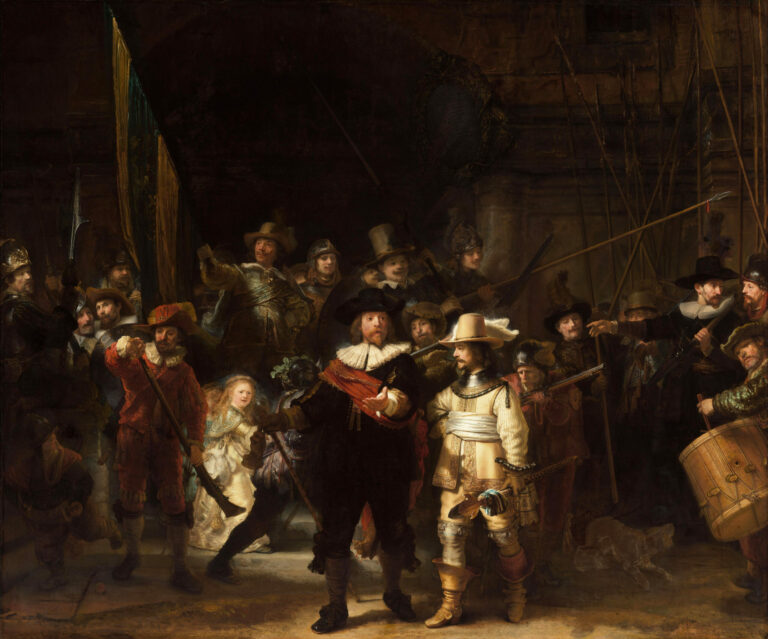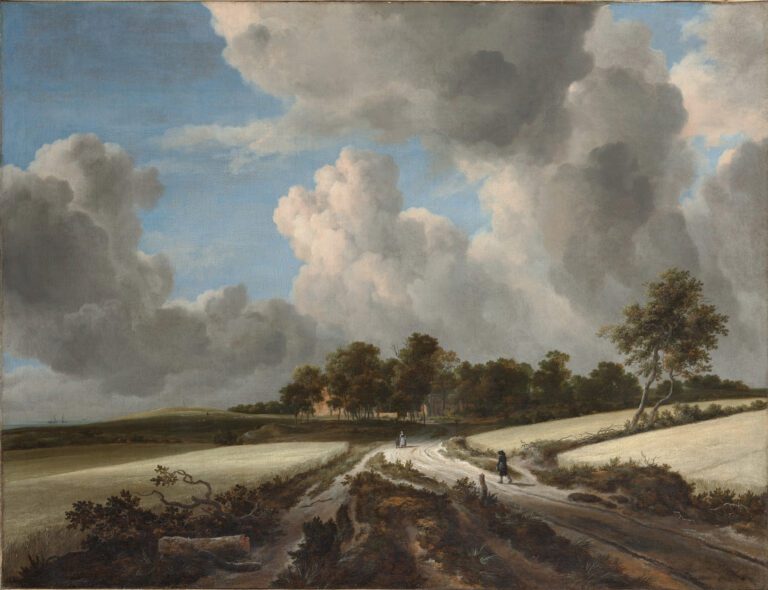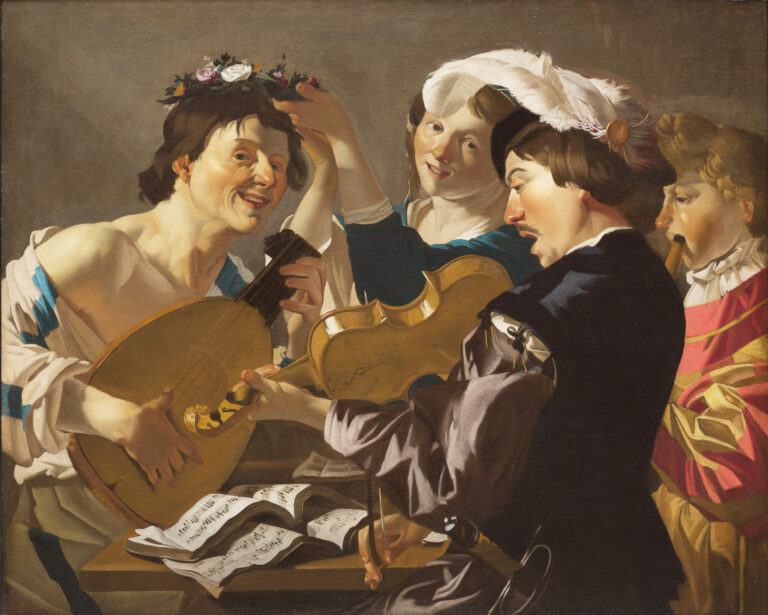
In this iconic work, Jacob van Ruisdael demonstrates his genius as a dramatic landscape painter.
The composition pivots on a striking contrast between the turbulent waters in the foreground and the relative tranquility of the inhabited landscape unfolding behind.
Massive rocks and uprooted tree trunks create a powerful diagonal that guides the viewer’s eye toward the mill and castle—silent witnesses to human presence within this tormented nature. The sky, a veritable pictorial tour de force, occupies nearly half the canvas, its threatening clouds fully contributing to the dramatic atmosphere. The masterfully orchestrated light causes the castle to emerge from the shadows while the mill stands in silhouette, creating a theatrical effect characteristic of Dutch Baroque and demonstrating the artist’s exceptional technical mastery.
Further information
- Landscape with Waterfall, Jacob Isaacksz van Ruisdael (c. 1656-1682)
- 70 x 54,5 cm
- Petit Palais, Museum of Fine Arts of the City of Paris, Paris Musées
- https://www.parismuseescollections.paris.fr/fr/petit-palais/oeuvres/paysage-a-la-cascade
Jacob Isaacksz van Ruisdael (1628-1682) is considered the greatest landscape painter of the Dutch Golden Age. Born in Haarlem, he developed a unique style characterized by a dramatic vision of nature, departing from the more pastoral representations of his contemporaries. The undisputed master of atmospheric landscape, he particularly excelled in rendering cloudy skies and light effects. His influence on 19th-century Romantic painters was considerable, notably on Constable who regarded him as his spiritual master. Ruisdael’s technical virtuosity, combined with his ability to infuse his landscapes with an almost mystical dimension, establishes him as a major figure in Western art history.






